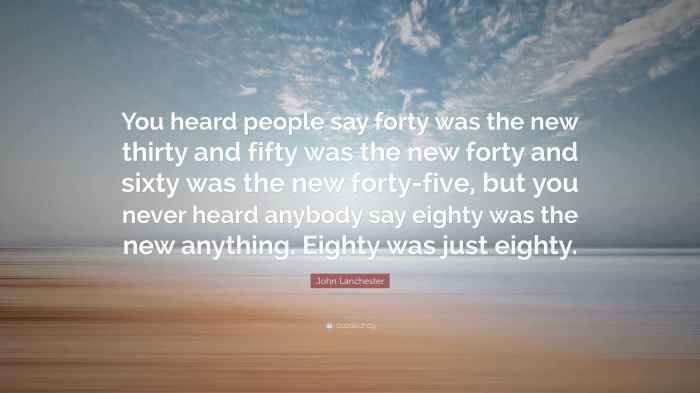How mentally strong people avoid false beliefs is a fascinating exploration into the inner workings of resilience and critical thinking. This journey delves into the traits that define mental fortitude, highlighting how these individuals approach information evaluation, manage emotions, and embrace uncertainty. We’ll uncover the secrets to avoiding pitfalls of false beliefs and the critical role of self-awareness and a growth mindset.
By understanding the methods mentally strong people use to scrutinize information, we can better equip ourselves to navigate the complexities of the modern world. We’ll analyze the interplay between cognitive biases, emotional responses, and intellectual humility. Learning these strategies can empower readers to cultivate a stronger, more resilient mind.
Identifying the Traits of Mental Strength
Mental strength isn’t a singular quality but a constellation of interconnected traits that empower individuals to navigate life’s challenges with resilience and grace. It’s not about avoiding difficulties, but rather about approaching them with a proactive and adaptable mindset. These traits, when cultivated, enable individuals to not only withstand adversity but to thrive in the face of it.Developing mental fortitude is a continuous journey of self-discovery and growth.
It involves recognizing one’s strengths and weaknesses, actively working on areas for improvement, and maintaining a balanced perspective. It is not a fixed state, but a dynamic process that evolves with experience and personal growth.
Key Characteristics of Mentally Strong Individuals
Cultivating mental strength involves developing a range of valuable characteristics. These characteristics enable individuals to face life’s obstacles with resilience and grace. They are not innate but are developed and honed through conscious effort and experience.
- Resilience: The ability to bounce back from setbacks and adversity. This involves acknowledging difficult emotions, processing them constructively, and finding the strength to move forward. Resilient individuals don’t dwell on failures; instead, they learn from them and adapt their strategies.
- Self-Awareness: Understanding one’s own emotions, thoughts, and motivations. This allows for greater self-regulation and the ability to respond to situations rather than react impulsively. For example, recognizing a pattern of negative self-talk can be a stepping stone to changing it.
- Adaptability: The capacity to adjust to changing circumstances and embrace new experiences. Mentally strong individuals view change as an opportunity for growth, rather than a threat.
- Self-Control: The ability to manage impulses, emotions, and behaviors. This is crucial for maintaining composure under pressure and making sound decisions.
- Problem-Solving Skills: The ability to identify problems, analyze their root causes, and develop effective solutions. This includes creativity, critical thinking, and a willingness to seek help when needed.
- Optimism: Maintaining a positive outlook, even in challenging times. This doesn’t mean ignoring problems but rather approaching them with hope and a belief in one’s ability to overcome them.
- Emotional Regulation: The ability to understand and manage one’s emotions, preventing them from overwhelming or controlling behavior. This involves recognizing triggers and developing healthy coping mechanisms.
Examples of Mentally Strong Individuals
Numerous individuals across various fields have demonstrated remarkable mental strength.
- Nelson Mandela: His unwavering commitment to justice and his resilience in the face of decades of imprisonment exemplify incredible mental fortitude. He demonstrated resilience, self-control, and unwavering optimism in the face of immense adversity.
- Malala Yousafzai: Her courage in advocating for girls’ education, despite facing threats to her life, showcases extraordinary resilience, self-awareness, and adaptability. She embodies the power of standing up for one’s beliefs in the face of significant challenges.
- Marie Curie: Her perseverance in pursuing scientific discoveries, despite societal barriers and personal hardships, is a testament to her self-awareness, adaptability, and problem-solving skills. Her dedication and unwavering determination demonstrate mental fortitude.
Resilience vs. Stubbornness
Resilience and stubbornness, while seemingly similar, are fundamentally different. Resilience involves adapting to challenges, learning from mistakes, and finding solutions. Stubbornness, on the other hand, is rigid and inflexible, often leading to unproductive outcomes. A resilient person recognizes when a course of action is no longer working and adapts, whereas a stubborn person maintains a fixed position even when it is demonstrably wrong.
Comparing Mental Fortitude Traits, How mentally strong people avoid false beliefs
| Trait | Description | Example | Difference from Stubbornness |
|---|---|---|---|
| Resilience | Ability to recover from adversity | Overcoming a job loss by seeking new opportunities | Adapts to the situation, learning from the experience |
| Self-Awareness | Understanding one’s emotions and motivations | Recognizing a pattern of procrastination and implementing a plan to address it | Acknowledges and works on weaknesses |
| Adaptability | Adjusting to changing circumstances | Shifting career paths based on market demands | Embraces change as an opportunity for growth |
| Self-Control | Managing impulses and emotions | Responding calmly to criticism instead of becoming defensive | Avoids impulsive reactions |
Recognizing and Evaluating Information

Cultivating mental strength involves not just avoiding false beliefs but also actively seeking truth and understanding. A crucial component of this is the ability to critically evaluate information, distinguishing between reliable sources and misinformation. This process involves employing various methods to assess validity and understanding common cognitive biases that can cloud judgment.Effective information evaluation requires more than just accepting what’s presented; it demands a discerning approach.
This involves understanding the motivations behind information dissemination and recognizing the potential for bias, whether intentional or unintentional. We must develop a toolkit of critical thinking skills to navigate the complex information landscape and form beliefs grounded in reality.
Methods of Assessing Information Validity
Individuals employ a variety of methods to assess the validity of information. These methods range from simple checks to complex analyses, each with its own strengths and weaknesses. Careful consideration of these methods empowers us to make informed decisions and avoid falling prey to false beliefs.
- Scrutinizing the source: Evaluating the author’s credentials, affiliations, and potential biases is paramount. A source’s reputation and track record of accuracy play a significant role in determining its reliability.
- Cross-referencing information: Verifying claims across multiple, independent sources strengthens the reliability of the information. Inconsistencies or discrepancies between sources often indicate potential inaccuracies or biases.
- Examining the evidence: The quality and quantity of evidence supporting a claim are crucial. Reliable evidence is usually verifiable and objective, rather than relying on anecdotal or subjective experiences.
- Considering the context: Understanding the circumstances surrounding the information’s creation and dissemination helps to identify potential biases or motivations. News outlets, for example, can be influenced by political or financial interests.
Critical Thinking and Source Credibility
Critical thinking skills are essential for evaluating the credibility of sources. These skills help us analyze the information presented, identifying potential biases and logical fallacies. Understanding logical fallacies allows us to evaluate the strength of arguments and identify potential weaknesses in reasoning.Critical thinking involves not just identifying flaws in arguments, but also evaluating the quality of evidence presented. This process involves identifying assumptions, recognizing logical connections, and considering alternative explanations.
It’s important to distinguish between correlation and causation and to avoid making generalizations based on limited data.
Importance of Diverse Perspectives
Forming beliefs based on a single perspective can lead to narrow and inaccurate understandings. Exposure to diverse perspectives broadens our understanding of complex issues, challenges our assumptions, and fosters a more nuanced and balanced worldview. This allows us to develop a more comprehensive and accurate picture of reality.Considering different viewpoints helps to identify potential blind spots and biases in our own thinking.
This process of considering different perspectives allows us to challenge preconceived notions and arrive at more informed and objective conclusions.
Mentally strong people dissect information, questioning assumptions and biases. They meticulously evaluate evidence before accepting anything as truth. This rigorous approach to learning, similar to the strategies used by those who master how memorize things quicker than other people , helps them avoid accepting false beliefs and form well-reasoned conclusions. Ultimately, this careful scrutiny ensures they’re basing their understanding on facts, not fabricated notions.
Cognitive Biases and False Beliefs
Cognitive biases are systematic patterns of deviation from norm or rationality in judgment. These biases can lead to false beliefs and flawed decision-making. Recognizing these biases is critical for maintaining mental strength and avoiding misinformation.
- Confirmation bias: The tendency to favor information that confirms existing beliefs and to disregard information that contradicts them.
- Availability heuristic: Estimating the likelihood of events based on how easily examples come to mind, leading to overestimation of improbable events.
- Anchoring bias: Over-relying on the first piece of information encountered (the “anchor”) when making decisions, even if that information is irrelevant or unreliable.
- Bandwagon effect: The tendency to adopt beliefs or behaviors simply because many other people are doing so.
Types of Evidence and Their Evaluation
Evaluating the validity of information relies heavily on recognizing the strengths and weaknesses of different types of evidence. Understanding these distinctions allows us to make more informed judgments.
| Type of Evidence | Strengths | Weaknesses |
|---|---|---|
| Empirical Data | Objectively measurable, replicable, can support or refute claims. | Can be manipulated or misinterpreted, may not capture the whole picture. |
| Expert Opinions | Can provide context, insights, and diverse perspectives. | Subjective, may be influenced by bias, can lack empirical support. |
| Anecdotal Evidence | Can be engaging and relatable, can generate interest. | Limited generalizability, prone to bias, may not be representative. |
| Statistical Data | Can reveal patterns and trends, support generalizations. | Can be misinterpreted, may mask underlying factors, require careful analysis. |
Managing Emotional Responses: How Mentally Strong People Avoid False Beliefs
Our emotional responses play a crucial role in how we perceive and process information. A strong emotional reaction can cloud judgment, making it harder to objectively evaluate evidence, even if we have excellent critical thinking skills. Recognizing and managing these emotional responses is a vital component of mental strength in the face of potentially misleading or false beliefs.Emotional regulation is the ability to control and manage our feelings.
When we can effectively regulate our emotions, we’re better equipped to handle conflicting information without letting our feelings dictate our conclusions. This emotional awareness allows us to approach evidence with a more balanced and rational perspective, reducing the risk of succumbing to false beliefs.
Emotional Regulation and False Beliefs
Emotional responses can significantly influence our acceptance of false beliefs. When confronted with information that contradicts our existing beliefs, strong emotional reactions, such as anger, fear, or denial, can lead us to dismiss or distort the evidence. This emotional bias can override rational evaluation and make us more susceptible to misinformation. The interplay between emotions and reasoning can often result in the selective interpretation and dismissal of information that doesn’t align with pre-existing beliefs.
Strategies for Managing Emotional Reactions to Contradictory Information
Effective emotional regulation strategies are crucial for navigating contradictory information without losing objectivity. These strategies involve recognizing emotional triggers and developing coping mechanisms to manage responses constructively.
- Active listening: Actively listening to different perspectives, even if they challenge your beliefs, allows for a more nuanced understanding of the situation. This process can help mitigate emotional responses and foster more balanced consideration of the evidence.
- Mindfulness techniques: Mindfulness practices, such as meditation and deep breathing exercises, can help manage stress and negative emotions. These practices promote emotional awareness and allow for a more detached perspective on the information.
- Cognitive restructuring: Identifying and challenging negative thought patterns associated with the information is essential. This involves questioning the validity of emotional responses and replacing them with more balanced and rational thoughts.
- Seeking external perspectives: Discussing the information with trusted individuals who hold different perspectives can provide valuable insights and help mitigate emotional biases.
Emotional Processing Techniques
Developing emotional processing techniques can help individuals manage emotional responses more effectively.
- Journaling: Writing down thoughts and feelings associated with the information can provide a clearer understanding of emotional responses and allow for reflection.
- Emotional labeling: Identifying and naming specific emotions experienced in response to information can help detach from the intensity of the feeling. This labeling can help in understanding the root of the emotional reaction.
- Emotional regulation exercises: Engaging in activities that help regulate emotions, such as physical activity, creative expression, or spending time in nature, can promote a more balanced and rational response to conflicting information.
- Seeking professional support: In situations where emotional responses are overwhelming or persistent, seeking support from a therapist or counselor can provide tailored strategies and coping mechanisms.
Examples of Emotional Responses Hindering Evidence Evaluation
Emotional responses can significantly impact our ability to evaluate evidence objectively. For example, if someone is deeply invested in a particular political ideology, they may dismiss any evidence that contradicts their beliefs due to feelings of anger or defensiveness. This emotional investment can lead to a selective interpretation of facts and a disregard for potentially crucial information.
- Confirmation bias: The tendency to favor information that confirms existing beliefs and dismiss information that challenges them is a clear example of how emotions can hinder objective evaluation.
- Emotional reasoning: Accepting information as true simply because it evokes a strong emotional response is another example. This type of reasoning ignores the need for evidence-based evaluation.
- Cognitive dissonance: The discomfort experienced when holding conflicting beliefs can lead to the rejection or distortion of information that contradicts existing beliefs. This emotional discomfort often results in the selective acceptance of information that confirms the individual’s perspective.
Stress and Susceptibility to False Beliefs
Stressful situations can significantly increase susceptibility to false beliefs. When individuals are under stress, their cognitive functions are often compromised, making them more prone to making errors in judgment and evaluation. This heightened vulnerability can lead to a decreased ability to critically assess information and an increased likelihood of accepting misinformation.
Fostering Emotional Intelligence in Information Evaluation
Developing emotional intelligence in the context of information evaluation is vital. Emotional intelligence involves recognizing, understanding, and managing one’s own emotions and the emotions of others. This skill allows individuals to approach information with a balanced perspective and a reduced likelihood of succumbing to emotional biases.
Embracing Uncertainty and Doubt

Embracing uncertainty and doubt is a crucial component of mental strength. It’s not about being perpetually pessimistic or indecisive, but rather about recognizing the limitations of our knowledge and approaching information with a healthy dose of skepticism. This allows us to avoid the pitfalls of confirmation bias and maintain a more accurate understanding of the world around us.
Intellectual humility, the awareness of our own knowledge gaps, is key to this process.Intellectual humility, at its core, is the ability to acknowledge and accept our limitations in knowledge and understanding. It’s a recognition that our perspectives are often incomplete and that there’s always more to learn. This doesn’t imply a lack of confidence but rather a nuanced understanding of the complexity of the world and our place within it.
It encourages us to seek out diverse viewpoints and engage in critical self-reflection.
Intellectual Humility and Avoiding False Beliefs
Intellectual humility plays a critical role in avoiding false beliefs. By acknowledging our potential biases and limitations, we create space for considering alternative perspectives and revising our understanding as new information emerges. This proactive approach to knowledge allows for a more comprehensive and accurate grasp of reality. We are not immune to errors, and acknowledging this is a strength, not a weakness.
Acknowledging Limitations in Knowledge
It’s essential to recognize that our knowledge is always partial and that there are gaps in our understanding. Acknowledging this limitation empowers us to seek out further information and engage in constructive dialogue with others. This process fosters intellectual growth and reduces the likelihood of clinging to inaccurate or incomplete information.
Examples of Embracing Doubt
Consider a scientist questioning a long-held theory. By acknowledging the possibility of error in their current understanding, they open themselves up to new discoveries. Similarly, a journalist investigating a complex issue can avoid biased reporting by acknowledging the limitations of their initial understanding and actively seeking out diverse perspectives. These examples highlight how embracing doubt can lead to a more accurate and nuanced understanding of the world.
Connection Between Admitting Mistakes and Mental Strength
The willingness to admit mistakes is a hallmark of mental strength. It demonstrates a commitment to truth and accuracy, even when it challenges our preconceived notions. Admitting errors is not a sign of weakness but a step toward growth and a deeper understanding. This ability to course-correct is crucial for personal and professional development.
Mentally strong people scrutinize information, looking for evidence rather than jumping to conclusions. They understand that weight loss, like any goal, requires a balanced approach. For example, consider exploring natural options like 10 natural supplements to lose weight fast , but also prioritize a healthy diet and exercise. Ultimately, they avoid false beliefs by relying on facts and sustainable strategies, not quick fixes.
Overcoming the Fear of Being Wrong
Fear of being wrong can stem from various sources, including a desire for validation, a fear of social judgment, or a need for certainty. To overcome this fear, we can focus on the value of learning from our mistakes. Viewing mistakes as opportunities for growth and refinement fosters a more resilient and adaptable mindset. We can also develop a sense of intellectual curiosity and a genuine interest in expanding our understanding.
By shifting the focus from the fear of being wrong to the excitement of discovering new things, we can embrace uncertainty with greater ease.
Advantages of Admitting Uncertainty and Doubt
| Aspect | Advantages |
|---|---|
| Improved Accuracy | By acknowledging uncertainty, we reduce the likelihood of clinging to false beliefs and increase the chances of arriving at more accurate conclusions. |
| Enhanced Learning | Embracing doubt encourages a willingness to learn and adapt, leading to continuous intellectual growth. |
| Stronger Relationships | Openly admitting uncertainty can foster trust and understanding in interpersonal interactions. |
| Increased Resilience | The ability to admit mistakes demonstrates adaptability and the capacity to recover from setbacks. |
| Reduced Stress | By accepting the inevitability of uncertainty, we can reduce stress and anxiety associated with clinging to fixed beliefs. |
Cultivating a Growth Mindset
Embracing a growth mindset is crucial for navigating the complexities of life and forming accurate beliefs. It’s a philosophy that recognizes the power of learning and adaptation, fostering a resilience that allows us to overcome challenges and embrace new information. This mindset, in contrast to a fixed mindset, views abilities and intelligence as malleable, something that can be developed through dedication and effort.A growth mindset encourages continuous learning and adaptation.
It’s not about believing you’re inherently perfect, but rather that you’re capable of improvement. This perspective fundamentally alters how we perceive setbacks and feedback, moving us from a position of fear of failure to one of opportunity for growth. This shift is vital in building a robust foundation for intellectual curiosity and self-improvement.
The Impact of a Growth Mindset on Belief Formation
A growth mindset significantly influences belief formation by promoting a more nuanced and adaptable approach to understanding the world. Individuals with a growth mindset are more open to considering diverse perspectives and challenging their own preconceived notions. This openness allows for a more flexible and dynamic belief system, better equipped to withstand the pressures of new information and experiences.
They are more likely to accept that their beliefs are not immutable truths, but rather hypotheses to be tested and refined.
How a Growth Mindset Fosters Learning and Adaptation
Individuals with a growth mindset actively seek out new challenges and opportunities for learning. They view mistakes as valuable learning experiences rather than signs of inadequacy. This proactive approach to learning and adaptation allows them to adjust their beliefs in response to new evidence and experiences. They embrace the process of learning, recognizing that it is an ongoing journey of refinement and development.
Examples of Growth Mindset and Feedback Acceptance
A person with a growth mindset views feedback, whether positive or negative, as an opportunity for improvement. For instance, if a student receives a lower-than-expected grade on an exam, instead of feeling discouraged or defeated, they might analyze the areas where they struggled and develop a plan to improve their understanding. Similarly, if a musician receives criticism on their performance, they might see it as a chance to refine their technique and develop a deeper understanding of the music.
The Relationship Between Growth Mindset and Intellectual Curiosity
A growth mindset cultivates intellectual curiosity. Individuals with a growth mindset are naturally inquisitive, eager to explore new ideas and perspectives. This inherent curiosity drives them to seek out knowledge and engage in critical thinking, leading to a more robust and well-rounded understanding of the world. They are not afraid to question their own assumptions and seek out information to support or refute them.
Methods to Foster a Growth Mindset
Cultivating a growth mindset is an ongoing process, not a destination. Several methods can be employed to foster a growth mindset:
- Embrace Challenges: Actively seeking out opportunities to learn and grow is fundamental. This might involve taking on new responsibilities at work, learning a new skill, or tackling a challenging personal project.
- View Mistakes as Learning Opportunities: Mistakes are not failures; they are stepping stones to understanding. Analyzing errors and identifying areas for improvement fosters growth and resilience.
- Embrace Feedback: Feedback, both positive and negative, offers invaluable insights for growth. Actively seeking and incorporating feedback allows individuals to refine their skills and understanding.
- Focus on Effort and Strategy: Recognize that effort and strategic planning are crucial for achieving goals. Concentrating on the process of improvement, rather than solely on outcomes, fosters a more sustainable and fulfilling approach to learning.
Growth Mindset Characteristics Table
| Characteristic | Description |
|---|---|
| Embrace Challenges | Actively seeking out opportunities to learn and grow. |
| View Mistakes as Learning Opportunities | Mistakes are not failures; they are stepping stones to understanding. |
| Embrace Feedback | Actively seeking and incorporating feedback for skill refinement. |
| Focus on Effort and Strategy | Recognizing the importance of effort and strategic planning for achieving goals. |
| Persistence | Continuing to strive towards goals even in the face of setbacks. |
| Learning Orientation | Prioritizing the process of learning over the outcome. |
Seeking External Validation and Feedback
Seeking external validation and feedback is crucial for personal growth and identifying potential blind spots. It allows us to step outside our own perspectives and gain insights from others who may have different experiences and viewpoints. This process, when approached constructively, can be a powerful tool for recognizing and correcting false beliefs, fostering self-awareness, and strengthening our overall mental resilience.Constructive criticism, when provided by trusted sources, can offer invaluable perspectives on our behavior, thought patterns, and communication styles.
This feedback can highlight areas where our beliefs might be inaccurate or misaligned with reality. Learning to effectively solicit and receive this type of feedback is a key component of developing mental strength.
Importance of Feedback from Trusted Sources
Seeking feedback from trusted sources is essential because these individuals are more likely to provide genuine and helpful insights. They are familiar with our strengths and weaknesses and can offer feedback that is tailored to our specific needs. Trustworthiness fosters an environment where honest communication is encouraged, and the feedback received is more likely to be accurate and constructive.
Constructive Criticism and Identifying False Beliefs
Constructive criticism is valuable in identifying and correcting false beliefs. By objectively evaluating feedback from trusted sources, we can pinpoint areas where our assumptions might be flawed. For example, if a close friend observes that we often dismiss their concerns, constructive criticism can help us understand how our actions might be perceived by others and identify the underlying belief that drives this behavior.
This can lead to self-correction and a more accurate understanding of ourselves.
Methods for Requesting and Receiving Feedback Effectively
Effective feedback requests and reception involve clear communication and active listening. When asking for feedback, be specific about the area you’d like input on and the type of feedback you’re hoping to receive. For example, “I’d appreciate feedback on how I can better communicate my ideas in meetings” is more effective than a vague request. When receiving feedback, listen actively and avoid getting defensive.
Paraphrase what you hear to ensure you understand the feedback correctly. This approach fosters a collaborative environment and allows for more productive discussions.
Examples of External Validation Improving Self-Awareness
External validation can significantly enhance self-awareness. For instance, if a mentor points out a recurring pattern in your decision-making process that consistently leads to negative outcomes, this provides valuable insight into potential biases or flaws in your judgment. This feedback can prompt self-reflection and lead to adjustments in future decision-making. Another example includes receiving feedback on communication styles from colleagues or friends.
This allows us to recognize areas where we might be misunderstood or where our approach could be improved.
Mentally strong people often dismantle false beliefs by actively questioning their assumptions. They recognize the power of negative self-talk and actively work to challenge it. This involves understanding 12 common yet harmful negative thoughts everyone should avoid, like catastrophizing or assuming the worst. By recognizing these patterns, and actively working to replace them with healthier thought processes, they can effectively avoid falling prey to false beliefs and maintain a more positive outlook.
Learning to identify and reframe these negative thought patterns is crucial for building mental resilience. 12 common yet harmful negative thoughts everyone should avoid can help you in this process. Ultimately, this conscious effort to scrutinize their thinking helps them avoid perpetuating false beliefs.
Maintaining Healthy Relationships with Supportive People
Maintaining healthy relationships with supportive people is vital for mental strength. Supportive individuals provide a safe space for feedback and encourage personal growth. Their presence contributes to a positive environment where we feel comfortable seeking and receiving constructive criticism. Furthermore, these relationships help build resilience and emotional stability, which are essential for managing stress and navigating life’s challenges.
Different Types of Feedback and How to Use Them
| Type of Feedback | Description | How to Use |
|---|---|---|
| Specific & Actionable | Focuses on observable behaviors and suggests clear steps for improvement. | Use this feedback to identify specific areas needing change and create a plan for implementing those changes. |
| Evaluative | Provides an overall assessment of a performance or characteristic. | Use this feedback to understand the broader context of your strengths and weaknesses and identify areas for future development. |
| Comparative | Compares your performance to others or a standard. | Use this feedback cautiously. Focus on the insights it provides rather than the comparison itself. |
The Role of Self-Awareness
Knowing yourself is the first step towards mental strength. Self-awareness isn’t just about recognizing your strengths; it’s also about acknowledging your weaknesses, biases, and the factors that influence your beliefs. This crucial insight allows you to critically evaluate information and develop a more accurate understanding of the world around you. It’s a compass guiding you towards truth, rather than getting lost in the fog of misinformation and false beliefs.Self-awareness acts as a filter, allowing you to distinguish between genuine insights and those shaped by personal biases.
It’s a critical tool in the arsenal of mental strength, enabling you to make informed decisions and avoid being swayed by flawed reasoning. By understanding your own emotional responses and thought patterns, you can better navigate challenges and maintain a balanced perspective.
Methods for Enhancing Self-Awareness
Understanding your motivations, emotional triggers, and thought processes is vital for mental strength. Engaging in introspection, journaling, and seeking feedback from trusted sources are effective methods for deepening self-awareness.
- Introspection: This involves quiet contemplation of your thoughts, feelings, and actions. Taking time for mindful reflection allows you to identify recurring patterns and behaviors that might influence your beliefs.
- Journaling: Regular journaling can help track your emotional responses to different situations. This process can highlight patterns in your thinking and behavior, which in turn aids in recognizing biases.
- Seeking Feedback: Asking trusted friends, family members, or mentors for honest feedback on your behavior and communication style can offer valuable insights into how others perceive you. This external perspective can help you identify blind spots and areas for improvement.
- Self-Assessment Tools: Various questionnaires and assessments, designed to gauge personality traits, values, and emotional intelligence, can be helpful resources for gaining a more comprehensive understanding of yourself. These tools offer insights into your thought patterns and how you interact with the world.
Examples of Recognizing Biases Through Self-Awareness
Self-awareness empowers you to identify and challenge your own biases.
- Confirmation Bias: Recognizing your tendency to favor information that confirms pre-existing beliefs is crucial. By understanding this bias, you can actively seek out opposing viewpoints and evaluate them objectively.
- Anchoring Bias: Self-awareness helps you recognize that the first piece of information you receive can disproportionately influence your subsequent judgments. Being aware of this bias allows you to consider information from various sources and perspectives before forming conclusions.
- Halo Effect: Recognizing the tendency to allow a positive impression of one aspect of a person or thing to influence your overall judgment is key. By acknowledging this bias, you can evaluate situations with more nuance and avoid letting positive or negative first impressions cloud your judgment.
Self-Awareness and Emotional Intelligence
Self-awareness is intricately linked to emotional intelligence. Understanding your emotions, their origins, and how they impact your decisions are vital aspects of emotional intelligence. A high degree of self-awareness is essential for regulating your emotions and responding effectively to challenges.
Emotional intelligence is the capacity to be aware of, control, and express one’s emotions, and to handle interpersonal relationships judiciously.
Understanding Personal Values and Belief Systems
Your personal values deeply influence your belief system. By identifying and understanding your core values, you can better discern whether your beliefs align with your fundamental principles.
- Value Alignment: Examining how your values shape your beliefs allows for greater self-understanding. A mismatch between values and beliefs may indicate areas where adjustments to beliefs are necessary for personal harmony.
- Value Clarification: Actively clarifying your values helps establish a strong foundation for making decisions aligned with your core principles. This process strengthens your mental fortitude by providing a clear framework for decision-making.
Identifying and Overcoming Blind Spots
Blind spots are areas where you are unaware of your limitations or biases. Self-awareness helps you identify and overcome these limitations.
- Seeking Feedback: Actively seeking feedback from trusted sources, and considering constructive criticism, is essential for uncovering blind spots. Be receptive to feedback, not defensive, and use it to improve your perspective.
- Challenging Assumptions: Self-awareness encourages you to challenge your assumptions and consider alternative viewpoints. This process of questioning assumptions fosters a more nuanced understanding of yourself and the world.
Distinguishing Between Opinion and Fact
Navigating the world of information requires a keen ability to discern between personal opinions and verifiable facts. This crucial skill is fundamental to forming accurate beliefs and avoiding the pitfalls of misinformation. Confusing opinions with facts can lead to the acceptance of false narratives and the perpetuation of harmful ideologies. Developing the capacity to distinguish between the two is a hallmark of mental strength.Understanding the difference between opinion and fact is a cornerstone of critical thinking.
An opinion is a belief or judgment that may or may not be supported by evidence, while a fact is an objective truth, verifiable and demonstrably true. This distinction is not always clear-cut, and individuals often express opinions as if they were indisputable facts. By understanding the characteristics of each, we can build a stronger foundation for making informed decisions and resisting the allure of false beliefs.
Defining Opinions and Facts
Opinions are subjective statements reflecting personal beliefs, interpretations, or viewpoints. They are not inherently wrong, but they lack the supporting evidence needed to be considered objective truths. Facts, conversely, are statements demonstrably true, often based on empirical evidence or established data.
Methods for Separating Opinions from Facts
Critical evaluation of information is essential. Scrutinize the source of information. Reputable sources, such as peer-reviewed academic journals, established news organizations, and recognized experts, are more likely to present facts than opinions. Cross-reference information from multiple sources. Discrepancies in information from various sources raise a red flag.
Analyze the supporting evidence. Look for verifiable data, statistics, and evidence to support claims. Be wary of emotionally charged language or persuasive rhetoric that aims to sway your beliefs rather than present facts.
Importance of Evidence-Based Reasoning
Evidence-based reasoning is the cornerstone of sound judgment. It involves evaluating information against established evidence and logical principles. This approach reduces the likelihood of accepting false beliefs and promotes a more accurate understanding of the world.
Examples of Opinion-Fact Confusion Leading to False Beliefs
The belief that vaccines cause autism is a prime example of how a widely circulated opinion, lacking evidence, can take root as a false belief. The overwhelming scientific consensus, supported by extensive research, refutes this claim. Another example is the widespread belief in certain conspiracy theories. These often lack factual basis and are perpetuated by biased or unreliable sources.
Types of Evidence
| Type of Evidence | Description |
|---|---|
| Empirical Evidence | Based on observation and experimentation, often quantitative data. |
| Statistical Evidence | Data-driven, using statistical methods to analyze trends and patterns. |
| Testimonial Evidence | Based on personal accounts or statements, which need to be assessed critically. |
| Anecdotal Evidence | Personal experiences, often unreliable for forming conclusions. |
| Expert Opinion | Statements from recognized experts in a specific field. |
Characteristics of Opinions and Facts
| Characteristic | Opinion | Fact |
|---|---|---|
| Subjectivity | Highly subjective | Objective |
| Verifiability | Not verifiable | Verifiable |
| Evidence | Lacks substantial evidence | Supported by evidence |
| Source | Can originate from various sources, including unreliable ones | Usually from reputable, credible sources |
| Changeability | Can change over time | Generally remains consistent |
Last Point
In conclusion, avoiding false beliefs is a multi-faceted process that requires a combination of mental strength, critical thinking, and emotional intelligence. The journey involves identifying personal biases, managing emotional responses to challenging information, and embracing uncertainty. By cultivating a growth mindset, seeking external validation, and prioritizing self-awareness, individuals can build a more robust foundation for truth and accurate judgment.
This exploration underscores the importance of continual self-improvement in navigating the world of information.










